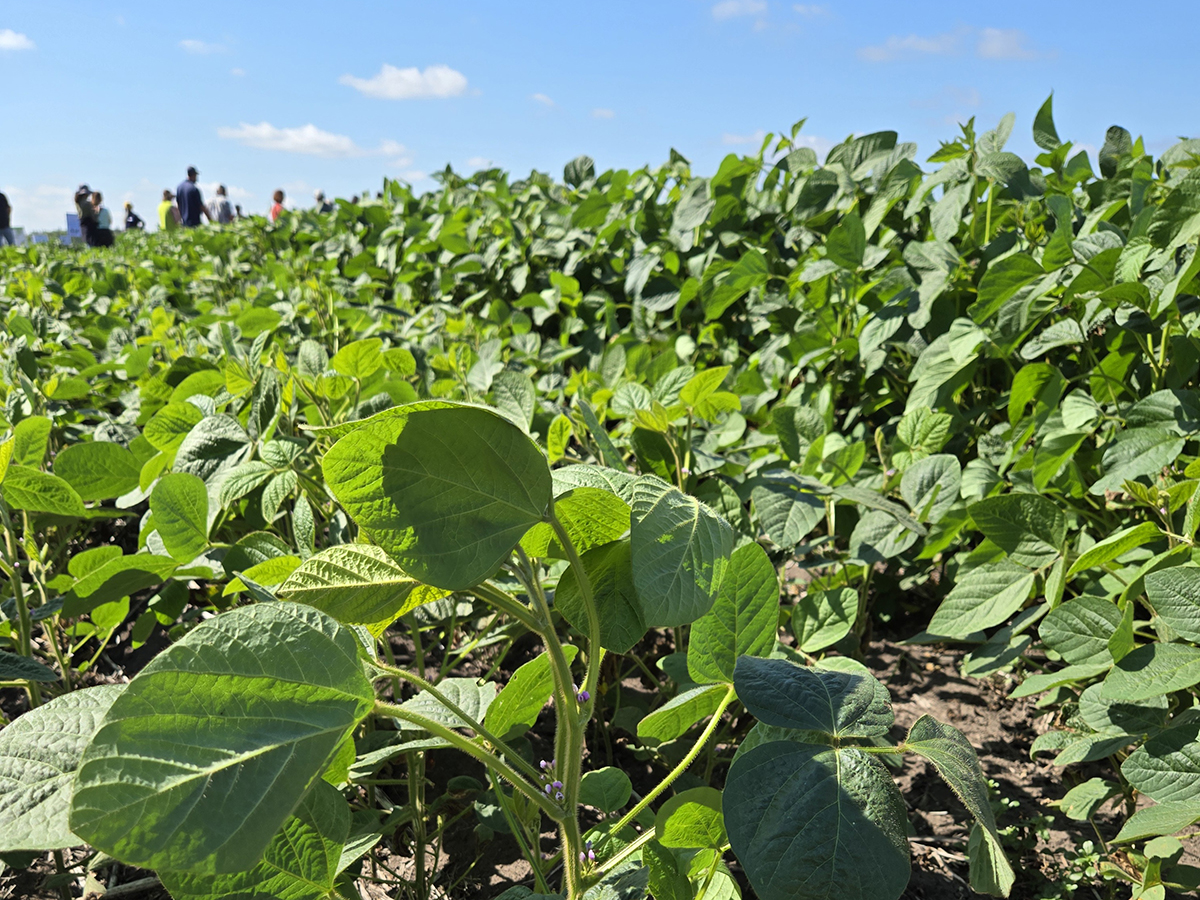Back in January, Kevin Kielstra knew he was going to have problems with his alfalfa this year.
His farm near Burdett, Alta., was blanketed with wet snow last fall, followed by persistent cold weather that created an icy glaze on the fields.
A cold southeast wind kept blowing throughout the winter, he recalls, and the ice never went away.
“We pretty much knew what was coming,” he said in an interview last week.
What was coming was winterkill, something the Kielstras have rarely seen in the 30 years they have operated a dairy farm about 100 kilometres southwest of Medicine Hat.
Read Also

Spider mites big soybean problem this season
Spider mite issues have been geographically limited but significant where they occur, said John Gavloski, an entomologist with Manitoba Agriculture.
The problem was so severe that he had to take out three of his four irrigated alfalfa circles, representing about 390 acres.
That land has been reseeded into corn, while 350 acres of last year’s barley land has now been seeded to alfalfa, creating an unexpected expense and workload.
“It’s really the first time for winterkill for us,” said Kielstra, adding that as dairy farmers they depend on producing a good alfalfa crop every year.
“You expect to grow the hay and it’s not there now. We’ll be forced to buy it instead of growing it.”
Kielstra said a number of neighbours had the same problem, losing large patches or entire fields due to the combination of unfavourable weather conditions.
Bjorn Berg, forage systems specialist for Alberta Agriculture in Lethbridge, said he has received reports of winterkill this year, although it’s not widespread.
There’s always some alfalfa winterkill, and it can occur under a variety of conditions. A lack of snow cover can cause frost damage to the plant crown. Too much snow cover can enable moulds and fungi to grow and destroy the plants.
The problem this year seems to be related to ice. Water seeped into the ground and then froze, depriving the roots of oxygen.
“It essentially suffocates the plant,” said Berg.
The trouble with winterkill is that new alfalfa can’t be seeded into old alfalfa.
Alfalfa is one of a group of plants that produce chemical compounds that are toxic to other members of their own species, a process known as autotoxicity. They do so to carve out a space for themselves and reduce competition from other plants for water, light and nutrients.
In addition, older alfalfa stands decay over time, resulting in a population of soil-based pathogens that develop a taste for alfalfa tissue. That means a newly seeded alfalfa has to deal with a high level of the deadly pathogens.
All of that means that it’s not recommended to reseed alfalfa into alfalfa, whether an entire field or just localized patches.
“If you plant alfalfa into an existing stand, it’s very rare to get a really good return,” said Berg, adding that producers can reseed alfalfa after growing a cereal crop on the old alfalfa stand.
Doug McRae, a fertilizer dealer from Pincher Creek, Alta., said one way to avoid or reduce alfalfa winterkill is through proper fertilization.
The root cause of winterkill, he said, is usually nutrient deficiency.
“If it goes into the winter weak, then it’s going to suffer winterkill. If it goes into the winter strong and healthy, then it’s not that much of an issue.”
Potassium and boron are essential for alfalfa health and a fall application of potash is recommended.
Michel Tremblay, forage specialist with Saskatchewan Agriculture, said fertilization is important, but doesn’t come with any guarantees.
“I would agree that good fertility is going to reduce the occurrence of winterkill, but to say it would eliminate it is maybe stating the case a bit strongly.”
Tremblay said winterkill results from the complex interaction of a number of factors, including genetics, stand age, disease levels, soil fertility, management, winter temperatures and snow cover.
He added he hasn’t heard any reports of abnormally high levels in Saskatchewan this year.
The same holds true in Manitoba, according to provincial government forage specialist Glenn Freisen.
He said the main area of concern is the southwest, where snow cover was limited and exposed areas, such as the hilltops, may have suffered damage.














